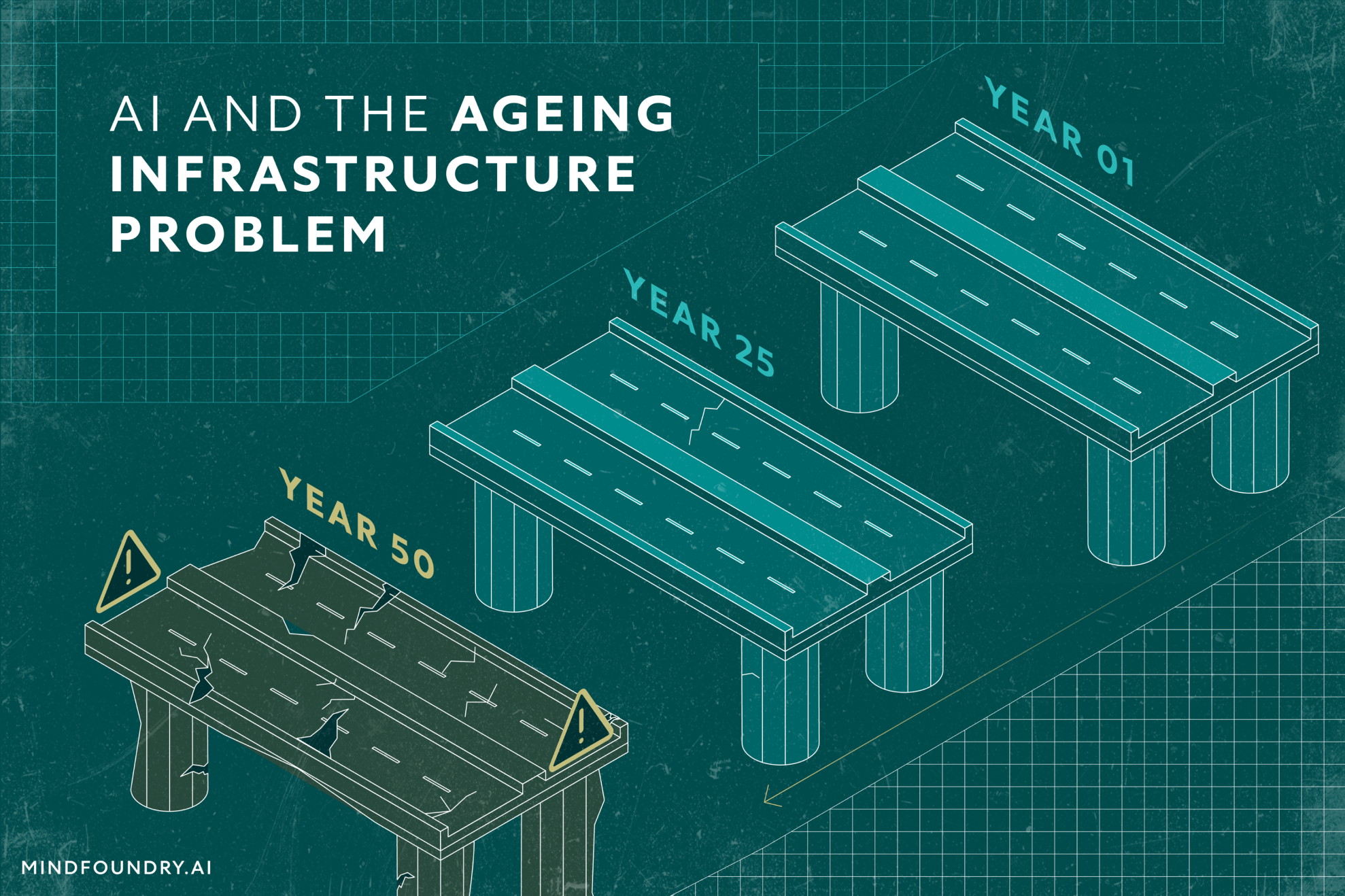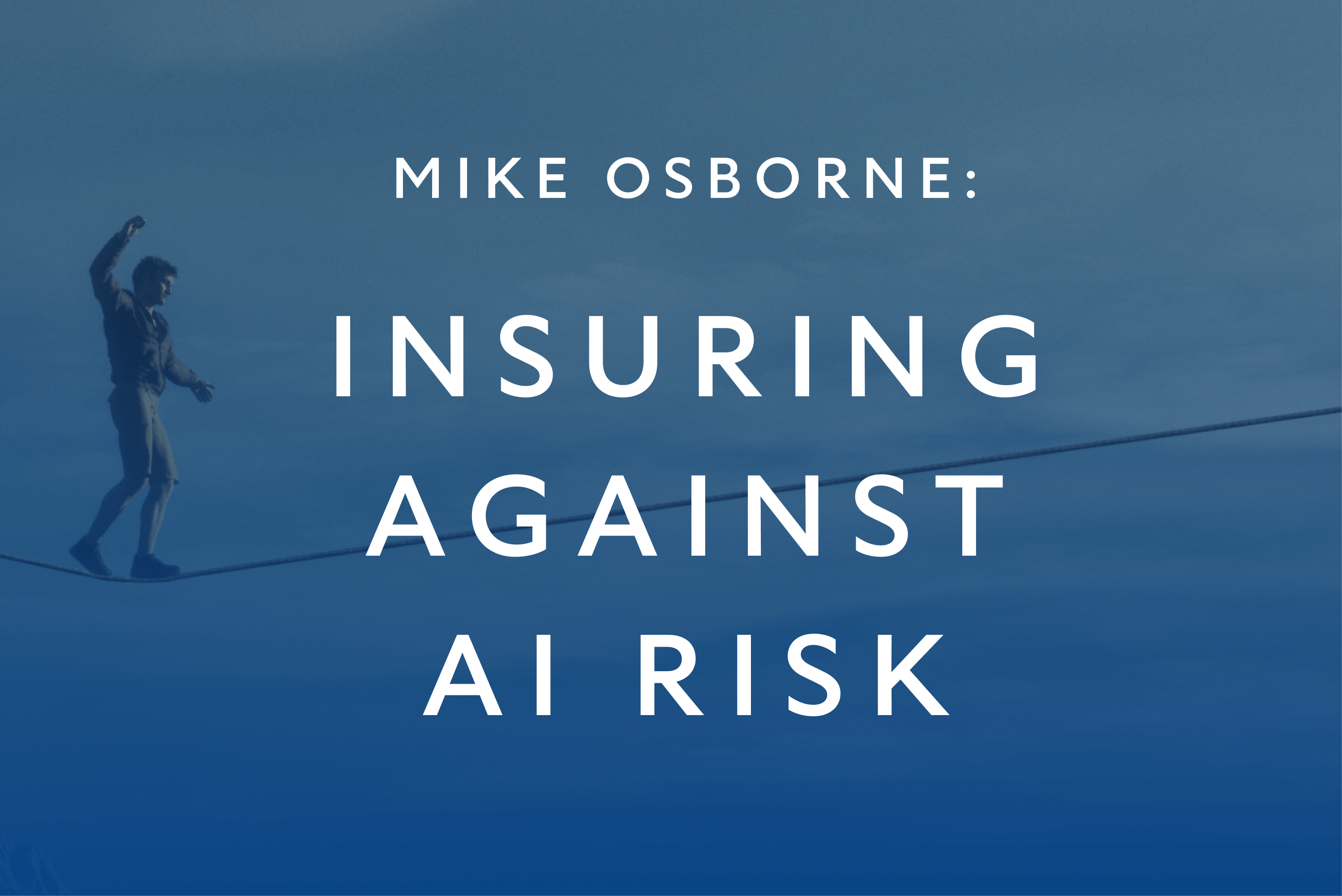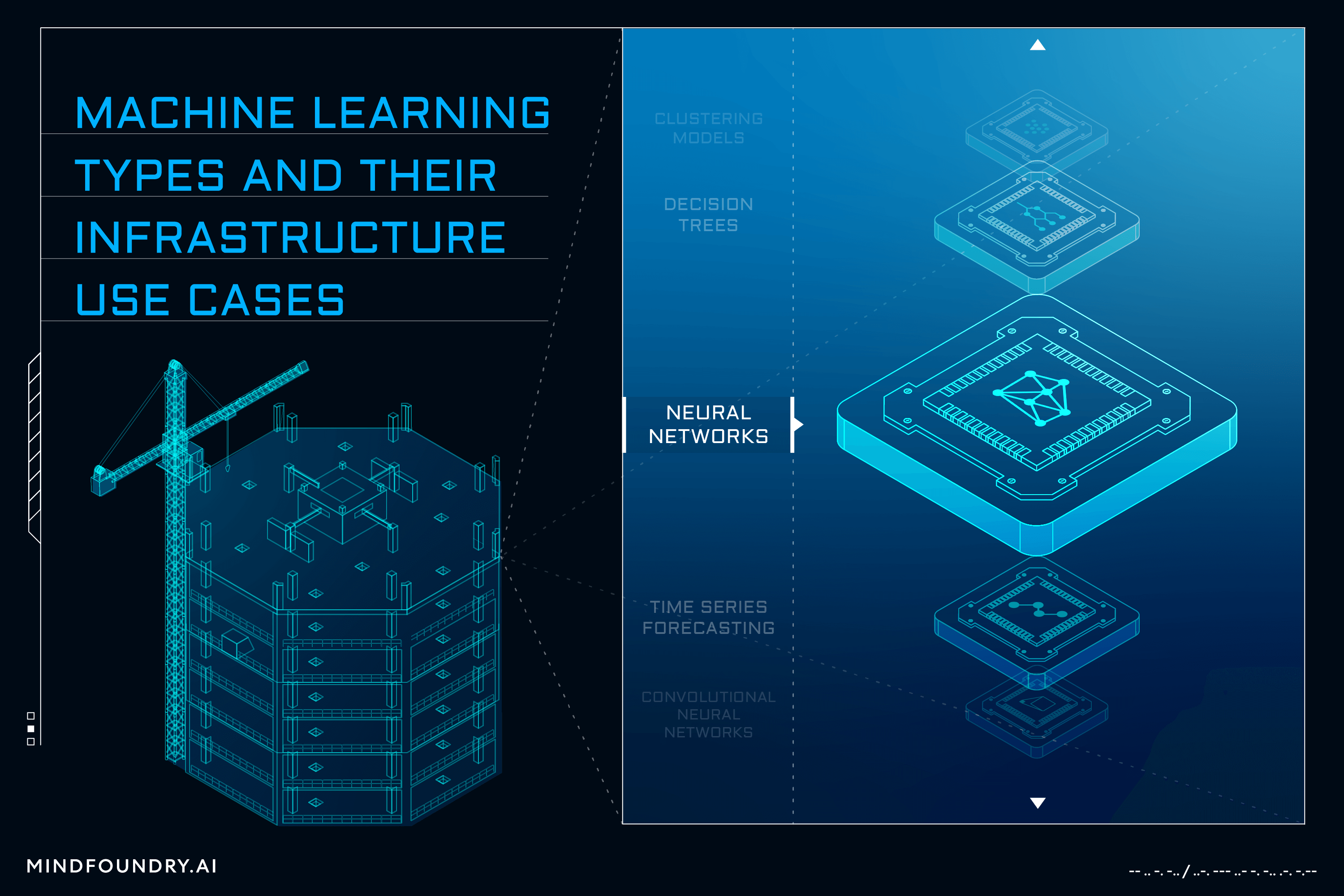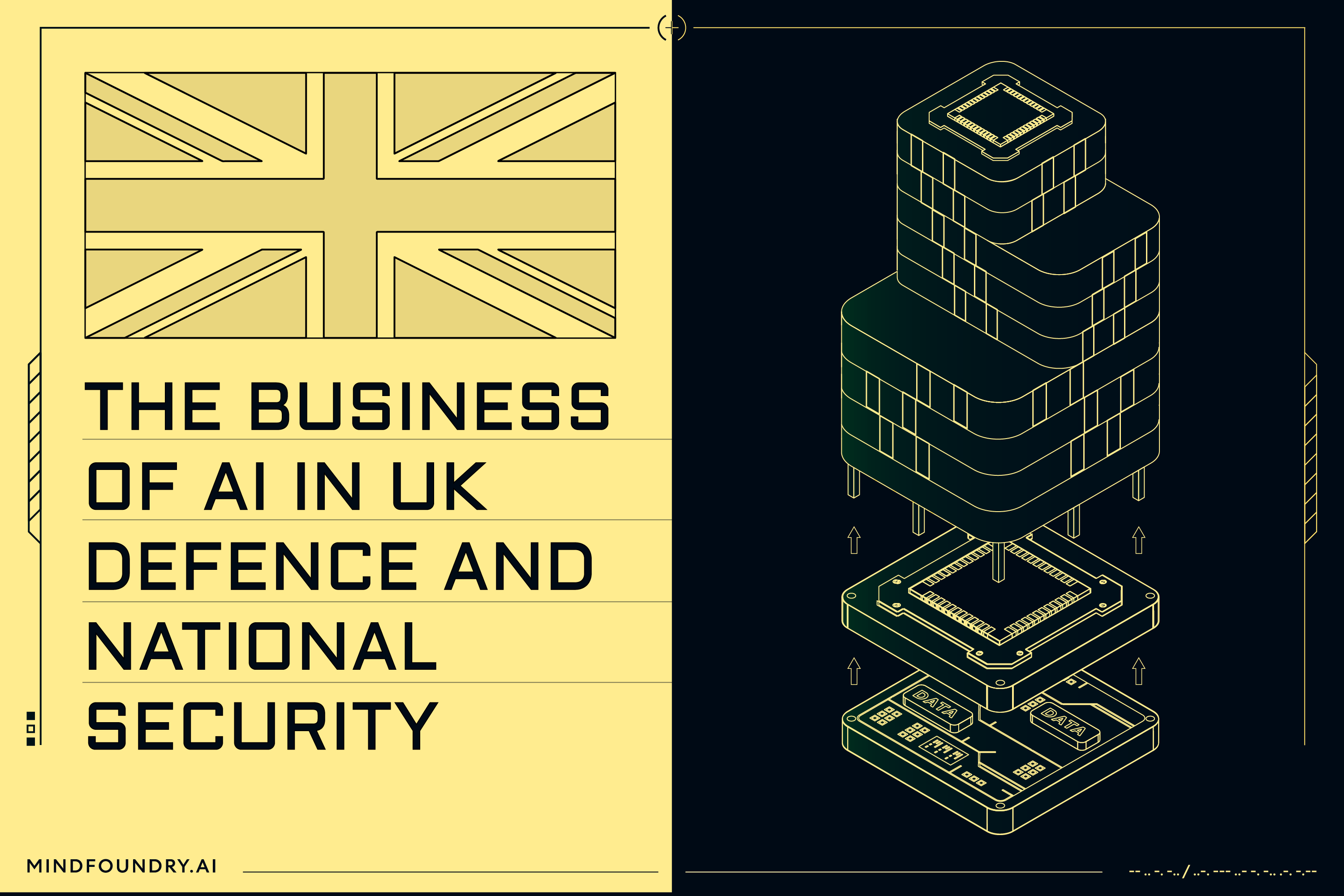Insuring Against AI Risk: An interview with Mike Osborne
When used by malicious actors or without considerations for transparency and responsibility, AI poses significant risks. Mind Foundry is working with...

Bridges are among the most important features of our built environment. They connect us and enable the free-flowing movement of people, goods, and services across physical barriers like rivers, valleys, and roads. If you were to remove, temporarily shut down or lose access to the bridges we have today, you would no longer have connected infrastructure. It's as simple as that.
But around the world, an enormous number of these bridges are quickly approaching the 50-year mark, the age when most modern bridges enter a stage of life that requires ongoing repair to ensure their safe operation. Maintaining healthy infrastructure through this new phase is a huge endeavour and will require massive amounts of time, money, steel, concrete, and labour that few countries today are equipped to deliver.

A Brief History of the Bridge Condition Crisis
The origins of the problem are complex. The confluence of financial constraints after the Great Depression, the need to stimulate economies through large infrastructure projects, and the availability of cheaper construction materials created a unique situation in which many bridges were built in a short period. After World War II, there was an urgent need for reconstruction in Japan and Europe, while in the United States, there was a desire to transition from a war economy to a peacetime economy.
The 1950s saw a massive boom in infrastructure development, especially with projects like the U.S. Interstate Highway System (authorised in 1956), which required the construction of thousands of bridges to support the new network of roads. This boom lasted through the 1970s and gained momentum with advances in construction materials, such as the development of new cement and steel types, making it cheaper and faster to build large-scale infrastructure. Post-war innovations in steel production, such as high-strength alloys and better welding techniques, coupled with the development of pre-stressed and reinforced concrete, allowed for constructing longer and more durable bridges at lower costs.
As structures reach the 50-year mark, their deterioration accelerates.
Watch the full video here.
The majority of the bridges we use today were built during this period. When well-maintained and receiving required upgrades throughout their lives, these bridges can be expected to operate safely and reliably for over a hundred years. Without proper maintenance, however, the asset starts to deteriorate, and lifespans can be reduced to 40 to 60 years.
Factor in the climate change-driven weather extremes, and we are seeing that our bridges are “degrading faster than we ever dared worry about,” says Professor Roberts.
With a large number of bridges now reaching the end of their intended lifespan, governments are facing significant challenges in terms of resources needed for repair, maintenance, or replacement. Many of these bridges were not designed for the level of traffic and loads they currently experience, particularly with the growth in vehicle numbers, sizes, and weights.
This is a global problem, but it is acutely felt in Japan, the USA and the UK. “Many of us don't realise that many of those physical assets are now reaching an age where they require more inspection and maintenance to remain in service” according to Dr Julia Bush, Senior Data Scientist at Mind Foundry.

The number of bridges built in Japan year-by-year
Ageing Infrastructure in Japan, the USA, and the UK
There are 730,000 bridges in Japan, but 34% of them are over 50 years old, and in the next ten years, this will climb to 59%. In the United States, 42% of bridges are over 50 years old, and in the United Kingdom, a recent report estimates that 1 in 24 bridges is currently “sub-standard” and three thousand of the UK’s busiest bridges are in “poor” condition.

The statistics behind the UK, US, and Japan's ageing infrastructure
Though there have been a few high-profile collapses recently in countries like Italy and the United States, the more likely outcome is that bridges will simply get closed while they await the necessary repairs to make them safe again. As the backlog from this condition crisis accelerates throughout the 2020s, the length of these delays will increase from weeks to months to potentially years as the governments and organisations in charge of maintaining them face increasing shortages of people, money, and materials.
“The only way we can avoid disruption is to optimise how we manage existing assets, and we do that by leveraging AI technology to make that a resource-optimal process,” says Julia Bush.
Japan's Ministry of Land, Infrastructure, Transport, and Tourism understands the urgency and importance of this problem and has indicated a policy of required preventive maintenance for all bridges aged 50 years or over.
.png?width=750&height=548&name=Number%20of%20bridges%20IN%20JAPAN%2c%20by%20administrator%20(1).png)
“Over the next 20 years, the proportion of facilities over 50 years old is expected to increase at an accelerating rate, and strategic maintenance, management, and renewal of this simultaneously ageing infrastructure are required.” - Japan Ministry of Land, Infrastructure, Transport and Tourism.
In Japan, 660,00 or 90% of the 730,000 bridges are managed by local governments that include cities, towns, wards, and prefectures. Susono City is an example of one of these. Located at the base of Mount Fuji in Shizuoka Prefecture, it has a population of 50,000 and a heavy reliance on hundreds of bridges. A government representative from Susono City says, “In the future, public infrastructure will increasingly deteriorate nationwide. Local governments, like Susono City, must implement safety measures with limited resources, and there is great anticipation for the use of AI to facilitate effective repairs.”
An Opportunity for AI to Make a Difference
It’s impossible to fix all the bridges at the same time. There just aren’t enough resources. The only way to solve this problem is to extend the reach of the budgets and materials we currently have by intelligently prioritising which assets will benefit the most from maintenance, inspections, repairs and upgrades at very specific moments in their life cycle. This is an excellent problem for AI to solve, and it requires access to high-quality condition data from the bridges.
To this end, ANDI, Mind Foundry, and the Aioi R&D Lab - Oxford are working together to develop a cutting-edge AI-powered tool for more efficient infrastructure inspection. At the core of this solution is Mind Foundry’s advanced AI model, which has already been trained using photos and inspection reports from approximately 300 bridges managed by Susono City.
Utilising cutting-edge computer vision and condition change monitoring techniques, this model is capable of detecting and quantifying bridge damage and automatically categorising the overall condition of the structures into classification types aligned with the inspection manuals for Japan, the United Kingdom, and the United States.
Using image analysis to detect and quantify infrastructure damage
Watch the full video here.
Maximising Effectiveness with Human-AI Collaboration
Municipal staff or inspection contractors will take photos of bridges and upload them through a dedicated app. The system will then analyse the captured images to detect and quantify damage. Human experts can then use the outputs for condition assessment, which contributes to the final determination regarding the bridge's condition. Using AI for the initial image analysis and damage identification removes some of the subjectivity that is otherwise unavoidable when the process is carried out entirely by individuals. This enables greater consistency without sacrificing the domain knowledge of the human experts.
“Tools that standardise and streamline infrastructure health assessments using AI will significantly contribute to existing maintenance inspections. By expanding this system nationwide, we can gather more data, which is expected to further improve the accuracy of AI models,” says Kei Kitamura, Deputy Manager of ANDI’s Future Strategy Creation Department.
“Our company has partnered with over 500 municipalities nationwide to work together on regional development,” says Ryosuke Kawai, Manager of the Regional Revitalization Strategy Office and Market Development Department, Aioi Nissay Dowa Insurance. “This initiative is expected to support local disaster prevention and mitigation measures. As a result, this will strengthen the accident prevention activities, preventing and mitigating disaster risk in the local society.“
Interested in working with Mind Foundry? Get in touch with our AI experts.

When used by malicious actors or without considerations for transparency and responsibility, AI poses significant risks. Mind Foundry is working with...

AI and Machine learning is a complex field with numerous models and varied techniques. Understanding these different types and the problems that each...

While the technical aspects of an AI system are important in Defence and National Security, understanding and addressing AI business considerations...